Are you a beer lover who has ever wondered why your favorite craft beer is so bubbly and effervescent? You may have heard that beer is carbonated, but do you know is beer carbonated? In this post, we will explore the science behind why beers are carbonated and investigate the various methods of carbonation utilized by brewers today. Whether you’re an expert home brewer or just looking to better understand beer’s fizziness, this post will provide valuable insight into one of the most beloved aspects of any pint glass. So read on as we unravel the mystery of how and why your favorite brews get their signature sparkle.
What Is Carbonation?
Carbonation is the process of adding carbon dioxide (CO2) to a liquid, in this case beer. This creates carbonic acid which gives beer its effervescence and distinctive taste. The level of carbonation in beer can vary greatly depending on the style and type of beer being produced. For some styles, such as lagers and pilsners, a higher level of carbonation is desired to give the beer a crisp and refreshing mouthfeel. On the other hand, certain dark beers like stouts and porters tend to have a lower level of carbonation to enhance their rich flavors.
Is Beer Carbonated?
Beer is generally carbonated, although there are non-carbonated and low-carbonated options available. Most brewers carbonate their beer either naturally, through the fermentation process where yeast consumes sugar and produces carbon dioxide, or through forced carbonation. In forced carbonation, CO2 is injected into the beer under pressure to achieve the desired level of carbonation. This method allows for precise control over the amount of carbon dioxide in the beer and is commonly used by larger commercial breweries. After knowing the answer to the question is beer carbonated. For more relevant and useful information, please refer to this new information.
The Different Types Of Carbonation In Beer
As mentioned, there are two main methods of carbonation in beer production: natural and forced. However, within these methods, there are also variations that can affect the final product.
- Natural Carbonation: Natural carbonation occurs during the fermentation process when yeast consumes sugar and produces alcohol and CO2. This is the traditional method used for centuries by brewers around the world.
- Bottle Conditioning: This is a form of natural carbonation where additional sugar and yeast are added to the beer after fermentation, allowing it to carbonate in the bottle. This method is often used for high-alcohol beers like Belgian ales and can create smaller, more delicate bubbles than forced carbonation.
- Keg Conditioning: Similar to bottle conditioning, keg conditioning involves adding sugar and yeast to the beer before it is transferred to a keg. This allows the beer to naturally carbonate inside the keg, resulting in a smoother and more consistent carbonation than forced carbonation.
- Forced Carbonation: As mentioned earlier, forced carbonation involves injecting CO2 into the beer under pressure. There are two main methods of forced carbonation:
- Carbonating in a brite tank: A brite tank is a type of vessel used to clarify and carbonate beer after it has finished fermentation. In this method, CO2 is injected into the beer while it is still in the brite tank, allowing for a quick and efficient carbonation process.
- Using a counter-pressure filler: This method involves filling the bottle or keg with CO2 and then transferring the beer into it. The pressure is gradually released during this process, allowing for a controlled carbonation that produces smaller bubbles and a smoother mouthfeel.
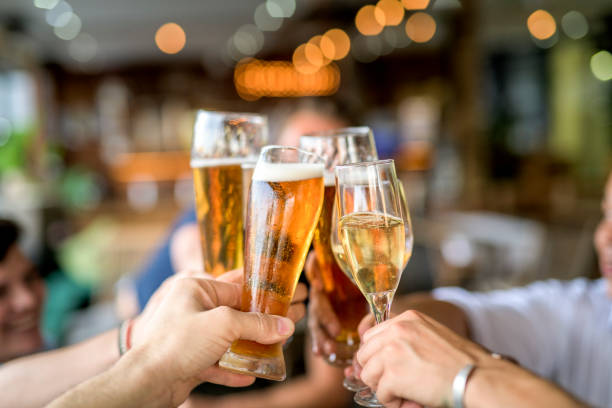
Read more: How many beers in a pitcher
How To Measure The Level Of Carbonation In Your Beer?
See more : Does Ginger Beer Have Alcohol? | Benefits Of Ginger Beer
The level of carbonation in beer can greatly affect the taste, mouthfeel, and overall drinking experience. So how do brewers measure and control the amount of carbon dioxide in their beer? One way is by using a tool called a carbonation tester, also known as a “carb stone”. This device measures the pressure inside the bottle or keg to determine the level of carbonation. Brewers can then adjust the pressure or amount of CO2 added accordingly to achieve the desired level of carbonation in their beer.
How To Adjust Carbonation Levels In Homebrewed Beer?
The carbonation level in beer can be regulated by adjusting the quantity of priming sugar in the priming solution. Following priming and filling, the freshly bottled beer should be stored at a temperature of 70-75F for a period of 2-3 weeks or until it is completely carbonated. For homebrewers, adjusting carbonation levels can be done during the bottling process by adding priming sugar to the beer before it is bottled. Priming sugar, typically in the form of corn sugar or dextrose, is added to the beer to provide a food source for yeast during bottle conditioning. The amount of sugar used can be adjusted based on the desired level of carbonation, with more sugar resulting in a higher level of CO2. Additionally, homebrewers can also use a carb stone or carbonation tester to measure the pressure and adjust accordingly.
Factors That Influence The Degree Of Carbonation In Beer
There are various factors that can influence the level of carbonation in beer, including:
- Temperature: Carbon dioxide is more soluble at colder temperatures, so storing beer at a lower temperature can result in higher levels of carbonation.
- Type of yeast used: Different strains of yeast produce varying amounts of CO2 during fermentation. Some strains may produce more or less carbon dioxide,
- Amount of priming sugar added: As mentioned before, the amount of priming sugar used can greatly affect the final carbonation level in beer.
- Bottle size and shape: The shape and size of the bottle or keg can also impact the degree of carbonation, as well as how quickly it dissipates. Smaller bottles may have a higher level of carbonation, while larger bottles may have a lower level.
- Fermentation vessel type: Different types of fermentation vessels can also affect the levels of carbonation. For example, open-top fermenters may allow for more CO2 to escape during fermentation, resulting in a lower final carbonation level.
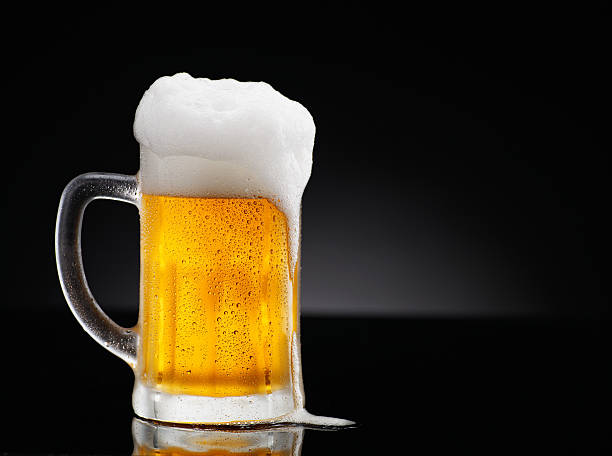
The Benefits Of Carbonated Beer Over Non-Carbonated Beers
Beer is carbonated, which stimulates the taste buds, particularly the sour receptors. The presence of bubbles aids in cleansing the palate, providing a refreshing sensation, and reducing the lingering aftertaste of highly bitter beers. In addition to enhancing the overall drinking experience, carbonated beer also has practical benefits for both brewers and consumers. Carbonation helps maintain the freshness and quality of beer by creating a barrier between the liquid and oxygen, which can negatively affect the flavor and aroma. It also adds texture and mouthfeel to beer, making it more enjoyable to drink.
How To Tell If A Beer Is Carbonated Without Opening The Bottle?
Rapidly invert the bottle followed by restoration to its upright position, applying gentle force without agitation. Observe any aerated space and inspect the occurrence of bubbles at the beer’s surface. Additionally, take note of the ascending bubbles if the beer has a lighter hue. These are all indicators of carbonation level in the beer. Another method is to gently shake the bottle and listen for a hissing sound, indicating the presence of CO2. However, it is important to note that these methods may not be completely accurate and the only sure way to determine the level of carbonation in beer is by opening the bottle or using a carbonation tester. So, while carbonated beer offers a range of benefits, it is important to properly measure and monitor the levels to ensure a consistent and enjoyable drinking experience.
Tips For Safely Handling And Storing Carbonated Beers
When handling and storing carbonated beers, there are a few precautions to keep in mind to ensure their safety and quality:
- Always store carbonated beers upright: This allows for the sediment at the bottom of the bottle or keg to remain undisturbed and not affect the taste of the beer.
- Store in a cool, dark place: Exposure to sunlight can cause chemical reactions in the beer, affecting its flavor and potentially creating off-flavors.
- Be careful when opening: Carbonated beers can build up pressure and may cause the bottle or keg to foam over if opened too quickly. Be sure to release pressure slowly before fully opening the container.
- Handle with care: Dropping or shaking a carbonated beer can cause it to lose its carbonation or even explode, so handle with caution.
- Check for freshness: If a carbonated beer is past its expiration date or has been stored improperly, it may have lost some of its carbonation and could taste flat. Always check for freshness before consuming. So, whether you are a brewer or a beer enthusiast, understanding how to adjust carbonation levels in homebrewed beer is essential for creating and enjoying a perfectly carbonated brew.
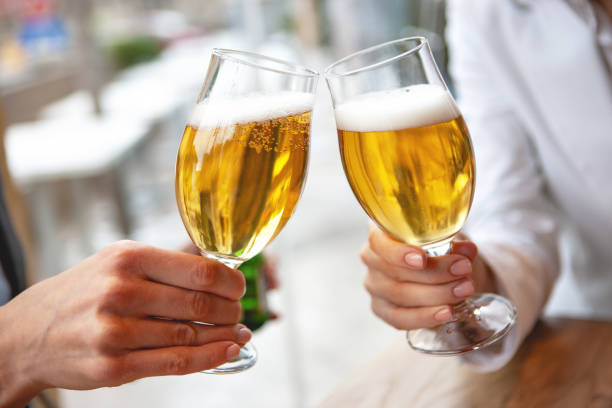
FAQ: Beer Carbonated
What beer is not carbonated?
Beer is naturally carbonated, and many breweries also force-carbonate it before packaging.
Does beer have as much carbonation as soda?
See more : How Many Beers In A Pitcher | Beers Pitcher
Beer is typically carbonated, although soda and seltzer tend to have higher levels of carbonation. Cider, on the other hand, can range from still to petillant (slightly effervescent) or sparkling (highly carbonated).
Which beers are naturally carbonated?
Pure Project’s mixed fermentation beers achieve carbonation through natural processes such as keg conditioning, bottle conditioning, and spunding. Examples of our naturally carbonated beers include Madeline, Roes Red, and Emmeline.
Is beer flat or carbonated?
Carbonation is a natural process during brewing, where even open vat brewing will naturally impart carbonation into the beer. However, without a pressurized bottle, barrel, or clay pot to contain it, the beer will eventually go flat.
Is Coke or beer more carbonated?
Different styles of beer have recommended carbonation levels. Generally, beers are carbonated to varying degrees. Sodas are typically more carbonated, while classic seltzer and mineral waters are similar to soda but can vary depending on the type and brand. Champagne is known for having the highest level of carbonation, approximately 1.5 times as much as a soda.
Is beer considered a carbonated drink?
Yes, beer is usually carbonated. While there are non-carbonated and low-carbonated beer options available, the majority of beer is carbonated through natural or forced carbonation during the brewing process.
Is beer naturally carbonated or is it added?
Beer is naturally carbonated through the yeast’s production of carbon dioxide and alcohol during the fermentation process. Controlling the amount of sugar added just prior to bottling allows for precise carbonation levels. The resulting carbonation of beer is directly influenced by the quantity of sugar added.

Ronald B Gamrot is the owner of Silverking Brewery, one of the most successful craft breweries in North America. He started the business from scratch in his garage, and it has since grown into a multimillion-dollar operation. Ronald is passionate about brewing delicious beer and providing top-notch customer service. He is a respected member of the brewing community and often speaks at industry events.


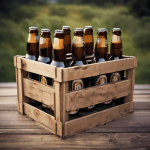

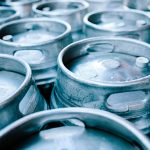



Most beers are carbonated, but there are some exceptions. For example, cask ales are typically less carbonated than their counterparts served from kegs or bottles.
Carbonated beer is the norm in every European country, even in the UK. The only beers without any carbonation are pure unblended lambics and some specialty beers that are not common.
I’m admittedly not a beer drinker, but I’d never even heard of uncarbonated beer.
Traditional home brewed beer in Denmark is not very carbonated though. But very few people today know about it.
Thank you for sharing your thoughts!
Thank you for sharing your thoughts!
I’m grateful for your input. It adds a valuable layer to the discussion.